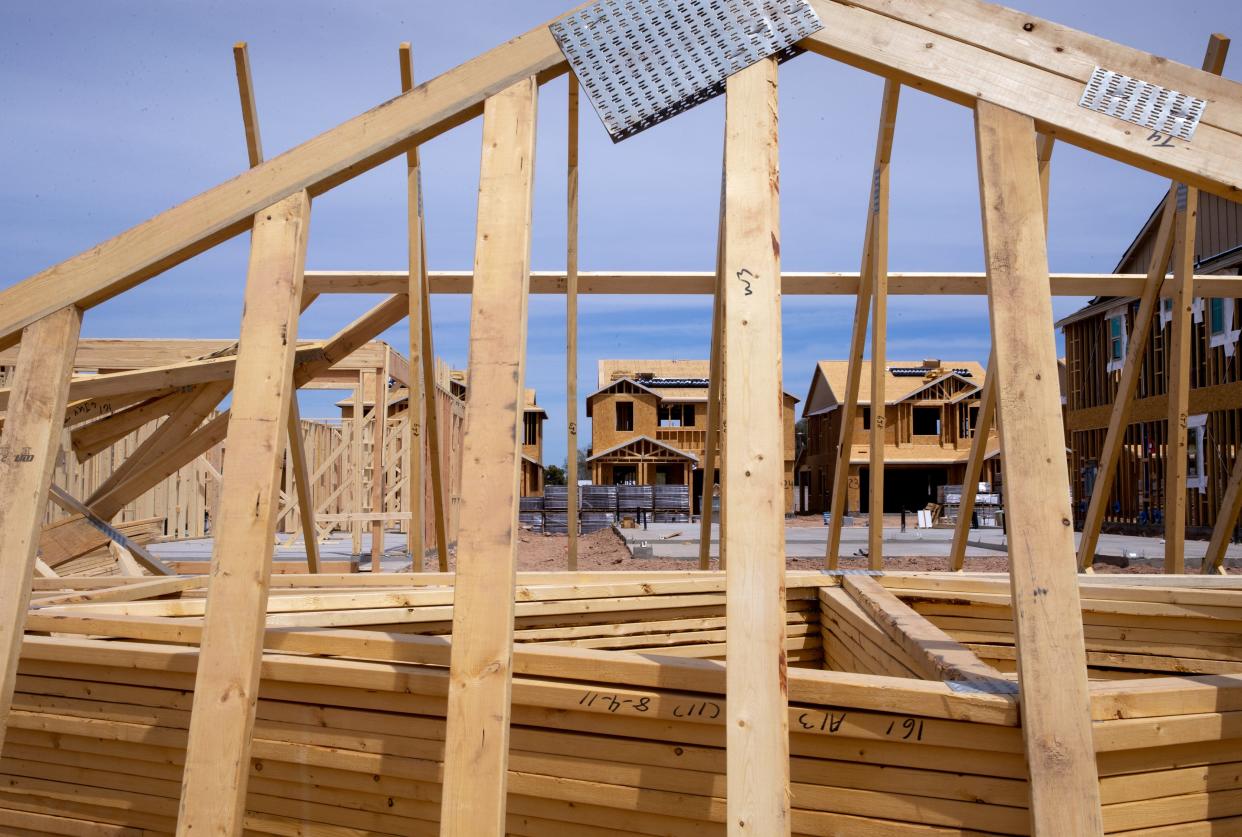Metro Phoenix has shut down growth, right? Well, not exactly

So, metro Phoenix has shut down growth, right?
That headline will inevitably appear somewhere, now that the governor has released a much anticipated, updated groundwater model.
But that’s not necessarily the case.
This is not the worst-case scenario
Indeed, the model revealed 4.86 million acre-feet in unmet demand over 100 years.
That means if everything plays out over the next century according to the assumptions in the model, metro Phoenix won’t have enough groundwater to cover 4% of total demand for it.
Because of that imbalance, the state Department of Water Resources will no longer consider new applications for residential developments that would rely heavily on groundwater.
This is consequential — particularly for areas on the outskirts of the Phoenix Active Management Area like Queen Creek and Buckeye, which exist because they were allowed to grow on groundwater.
It may feel like a comeuppance.
But it is far from the worst-case scenario that many had feared for metro Phoenix, particularly given that the adjacent Pinal AMA has roughly 8 million acre-feet of unmet demand to ameliorate.
The pause does not impact existing users
First — and we must be clear about this — we’re just talking about future growth in metro Phoenix, not existing users.
No one’s tap will be turned off because the model predicted unmet demand.
It also will have limited immediate effect on designated water providers, which comprise a vast portion of the Phoenix AMA and have proven to the state that they have secured enough water to serve an additional amount of use.
Metro Phoenix’s largest and most established cities still have room in their designations to accommodate growth, though we’ll see how much capacity they have to absorb additional users when designations are renewed in coming years.
Factories and apartments can still build
The state has paused new certificates and analyses — the mechanisms developers use to grow outside a designated provider’s service area.
But those are only required to plat and sell lots in subdivisions, which are defined in state law as land split into six or more lots.
That doesn’t include most major commercial and industrial developments.
Or apartments.
It also doesn’t apply to single-family homes that are built to rent, though some lawmakers still hope to rein in that provision this session.
All these land uses could still materialize — even in Buckeye, Queen Creek and other areas without a designation.
It’s also important to note that subdivisions with issued certificates can still build.
There are about 80,000 such lots across metro Phoenix.
Growth will become more expensive
So, no, growth hasn’t stopped.
But it will get more expensive, no matter how this plays out.
If growth that was expected on the outskirts is absorbed over time in major cities, it will likely cost more to build there than on raw desert.
And if that growth remains in the outskirts, developers will either need to find their own renewable supplies, or cities like Queen Creek and Buckeye will have to secure enough supplies to get designated so they can serve them.
Efforts to do both are already underway. Neither is cheap.
Another view: Arizona won't explain why it has paused some farm leases
And, yes, that has consequences, considering that metro Phoenix already is woefully short on housing units.
This pent-up demand raises prices, which also affects those of us who have lived here for years.
It’s neither simple nor beneficial to simply cut off growth, even if plenty of folks argue that’s what Arizona should do now.
It's time for a more holistic look at this
That said, it’s clear we can’t continue to grow exactly how we have in the past.
If anything, the Phoenix model shows how critical it is to require that new developments prove they have enough water to sustain themselves for the long haul — before building.
But the law that does so was developed 40 years ago, when growth meant only single-family homes — not the mix of commercial, industrial and multifamily development that we see today.
Which is why, now that there is trouble on the horizon, Arizona is ratcheting down one part of the growth machine and not others.
Is that fair? Or offering the level of consumer protection that our leaders envisioned 40 years ago?
It’s time for a far more holistic look.
Reach Allhands at joanna.allhands@arizonarepublic.com. On Twitter: @joannaallhands.
If you love this content (or love to hate it – hey, I won't judge), why not subscribe to get more?
This article originally appeared on Arizona Republic: Metro Phoenix has shut down growth to save groundwater? Not exactly

